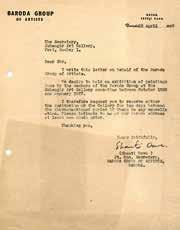Shanti Dave H1 Title
Shanti Dave
Shanti Dave
|
b - 1931 Shanti Dave |







‘His paintings are beyond aesthetics and realms of art. They represent him and
the colour and texture of his life’
MAHENDRA PANDYA
artist timeline
artworks
dag exhibitions
|
The ‘Manifestations’ series of 20th Century Indian Art, Editions VI, VII, IX, X, XI |
|
DAG, New Delhi and Mumbai, 2011-14 |
|
‘Indian Portraits: The Face of a People’ |
|
DAG, New Delhi and Mumbai, 2014 |
|
‘Indian Abstracts: An Absence of Form’ |
|
DAG, New Delhi, 2014; Mumbai and New York, 2015 |
|
'The Fifties Show' |
|
DAG, New Delhi, 2020 |
|
‘The Sixties Show’ |
|
DAG, Mumbai, 2020 |
|
‘Home is a Place: Interiority in Indian Art’ |
|
DAG, New Delhi, 2021 |
|
‘Indian Blue: From Realism to Abstraction’ |
|
DAG, New Delhi, 2021 |
|
‘Iconic Masterpieces of Indian Modern Art’ |
|
DAG, Mumbai, 2021 |
notable collections
|
National Gallery of Modern Art, New Delhi |
|
Lalit Kala Akademi, New Delhi |
|
Jehangir Nicholson Art Foundation, Mumbai |
|
Government Museum and Art Gallery, Chandigarh |
|
Glenbarra Art Museum, Himeji |
|
Philadelphia Museum, Philadelphia |
|
South Wales Museum, Sydney |



























